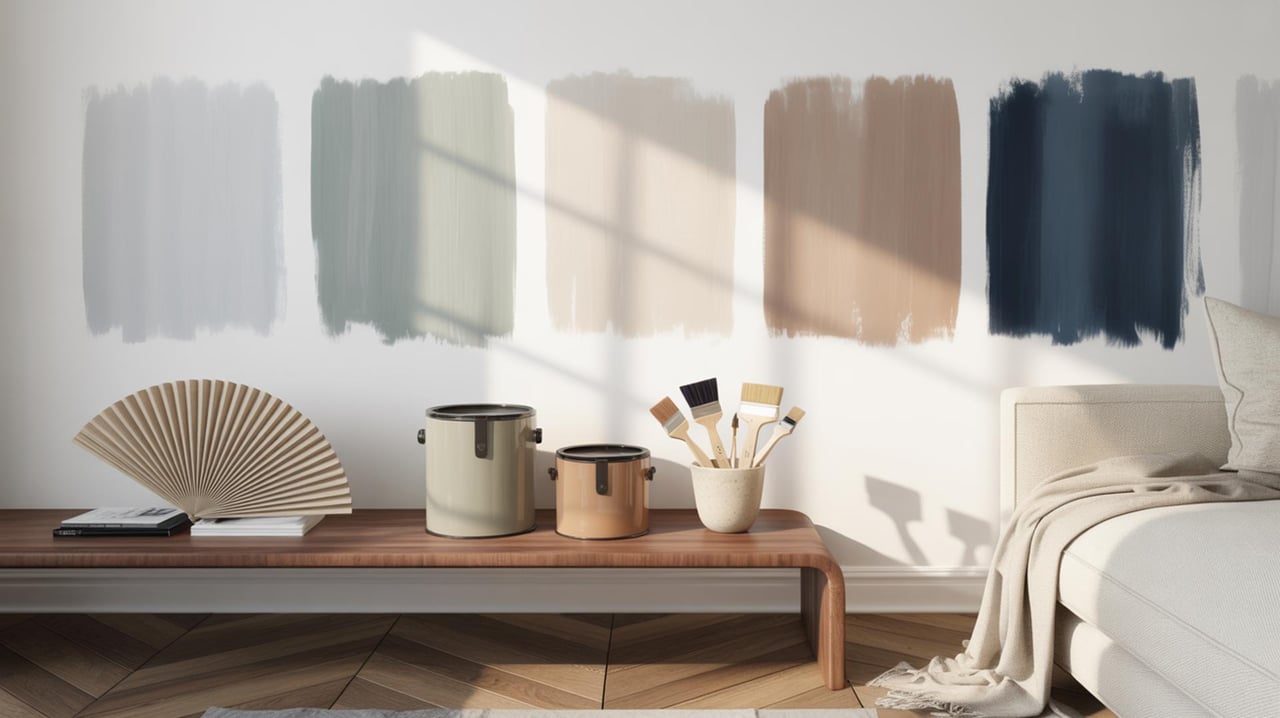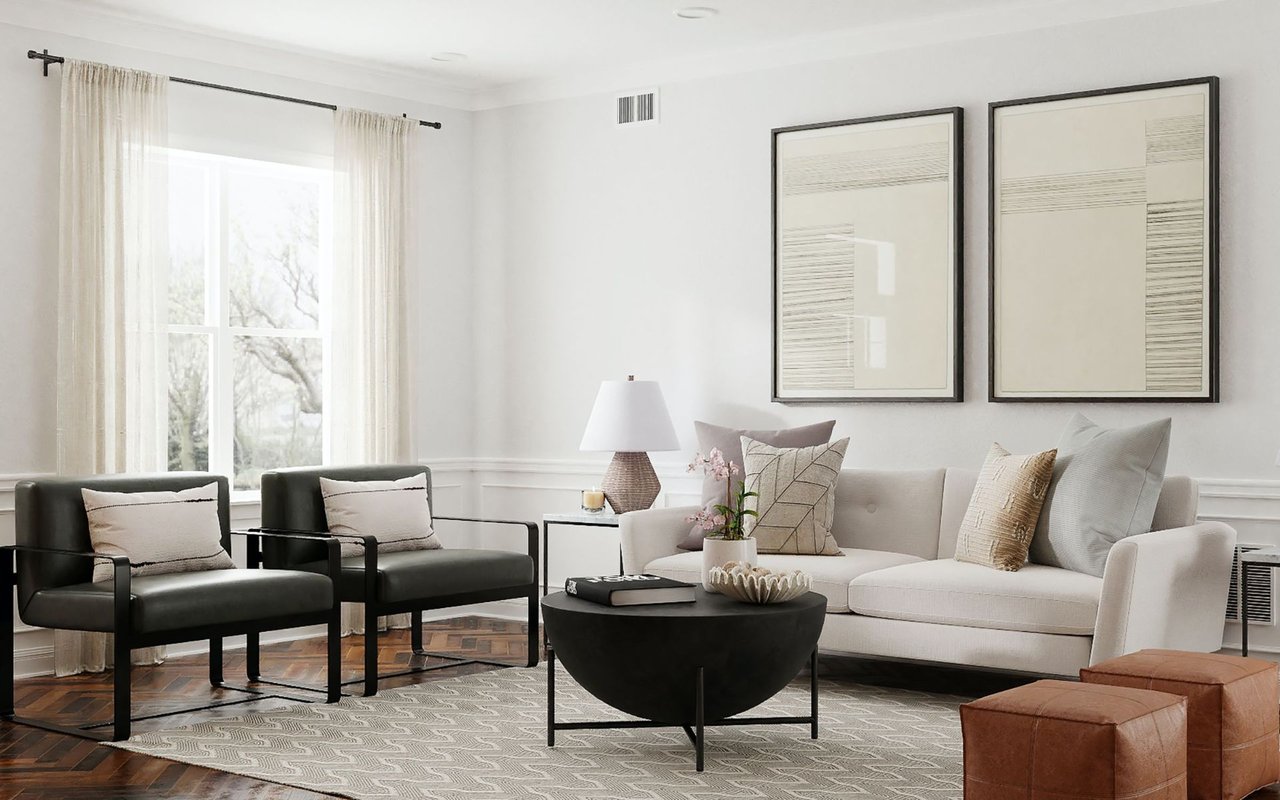Choosing the right colors for your home can transform your living space, creating an atmosphere that reflects your personality and enhances your environment. Painting your home is not just about selecting a color; it's about achieving hue harmony that complements your space and lifestyle. Whether you're looking to refresh a single room or undertake a complete home makeover, understanding the nuances of color selection and application can make a significant difference. Here are expert tips to guide you through the process of painting your home.
Understanding Color Psychology
Color psychology plays a crucial role in how we perceive and interact with our environment. Different colors can evoke various emotions and moods. For instance, blues and greens are often associated with calmness and tranquility, making them ideal for bedrooms or relaxation areas. On the other hand, vibrant colors like reds and yellows can energize a space, perfect for kitchens or living rooms where activity and social interaction are common. When selecting colors, consider the mood you want to create in each room and how these colors will interact with your existing decor.
Choosing a Color Palette
Selecting a cohesive color palette is essential for creating a harmonious flow throughout your home. A well-chosen palette can tie different rooms together, giving your home a unified look. Start by selecting a base color that will serve as the foundation for your palette. This could be a neutral shade that complements various accent colors. Once you have your base color, choose a few complementary shades to use as accents. These could be bolder colors for feature walls or subtle hues for trim and moldings. Consider using a color wheel to identify complementary colors that will enhance your chosen palette.
Considering Lighting Conditions
Lighting can dramatically affect how colors appear in a room. Natural light, artificial lighting, and even the direction a room faces can change the perception of color. Before committing to a color, test it in different lighting conditions to see how it looks throughout the day. Paint a small section of the wall and observe how the color changes with the light. This will help you avoid surprises and ensure that the color you choose will look as expected in various lighting scenarios.
Testing Paint Samples
Before purchasing large quantities of paint, it's wise to test samples on your walls. This allows you to see how different shades look in your space and how they interact with your furniture and decor. Apply a small amount of each sample to the wall and observe it over a few days. Pay attention to how the color looks at different times of the day and under various lighting conditions. Testing samples can save you time and money by helping you make an informed decision before committing to a specific color.
Preparing Your Walls
Proper preparation is key to achieving a professional-looking paint job. Start by cleaning your walls to remove any dirt or grease that could affect paint adhesion. Fill in any holes or cracks with spackle and sand the surface smooth. If your walls have a glossy finish, consider using a primer to ensure the new paint adheres properly. Taking the time to prepare your walls will result in a smoother finish and longer-lasting results.
Selecting the Right Finish
The finish of your paint can affect both the appearance and durability of your walls. Different finishes are suited to different areas of the home. For example, a matte finish can hide imperfections and is ideal for low-traffic areas like bedrooms. In contrast, a satin or semi-gloss finish is more durable and easier to clean, making it suitable for high-traffic areas like kitchens and bathrooms. Consider the function of each room when selecting a paint finish to ensure it meets your needs.
Using Quality Tools
Investing in quality painting tools can make a significant difference in the outcome of your project. High-quality brushes and rollers provide better coverage and a smoother finish. They also reduce the likelihood of streaks and uneven application. When selecting tools, consider the type of paint you're using and the surface you're painting. For example, a roller with a thicker nap is better suited for textured surfaces, while a thinner nap is ideal for smooth walls.
Applying Paint Techniques
Using the right painting techniques can enhance the overall look of your walls. Start by cutting in around the edges with a brush before using a roller to fill in the larger areas. This ensures clean lines and a professional finish. When using a roller, apply paint in a "W" or "M" pattern to distribute it evenly and avoid visible roller marks. Take your time and apply multiple thin coats rather than one thick coat for a more even and durable finish.
Maintaining Painted Surfaces
Once your walls are painted, proper maintenance will keep them looking fresh and vibrant. Regular cleaning with a soft cloth and mild detergent can remove dirt and prevent stains. Avoid using harsh chemicals or abrasive materials that could damage the paint. Touch up any scuffs or chips promptly to maintain the integrity of the finish. By taking care of your painted surfaces, you can extend the life of your paint job and keep your home looking its best.
Hiring Professional Painters
While painting can be a rewarding DIY project, hiring professional painters can save time and ensure a flawless finish. Professionals have the experience and expertise to handle complex projects and can offer valuable advice on color selection and application techniques. If you're considering hiring painters, get quotes from multiple companies and check references to ensure you're choosing a reputable service. A professional paint job can enhance the value of your home and provide lasting results.
Transform Your Home with Color
Painting your home is a wonderful way to express your style and enhance your living space. With the right colors and techniques, you can create a warm and inviting atmosphere that reflects your personality. If you're ready to start your painting journey or need more personalized advice, reach out to Crystal Reeves-Paynter for expert guidance. Let Crystal help you bring your vision to life!

